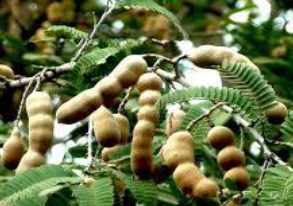Aqueous extract of tamarindus indica bark exhibits anti-hypergylcaemic activity
Keywords:
tamarindus indicaAbstract
Normal cellular metabolism produces reactive oxygen species (ROS) and reactive nitrogen species (RNS), which have various physiological functions. Oxidative stress causes cellular components to degrade, leading to diabetes and its complications. Diabetes mellitus (DM) is a chronic endocrine disorder causing blood glucose variations, affecting over 415 million people worldwide. Glucose control is crucial for maintaining pro-oxidant/antioxidant balance, and insulin secretagogues and sensitizers are used to control hyperglycaemia. Traditional medicine, including Tamarind, has been a foundation for centuries, with cultivation dating back to the first millennium BC.
Tamarind, an evergreen tree with pale yellow and pink blossoms, grows up to 24 meters tall and 7 meters in diameter. Found in Africa, Senegal, Ethiopia, Sudan, Mozambique, Madagascar, Thailand, Bangladesh, Indonesia, Mexico, and Costa Rica, it has industrial, commercial, and medical applications. Its fruit, tamarind, can be sweet or sour.
The Tamarindus indica tree, a moderate to big evergreen tree, can grow up to 24 meters tall and 7 meters in circumference. It is grown almost everywhere in the country except the Himalayas and arid western areas. Its compound leaves have 10-18 pairs of opposing leaflets, tiny hairs, and beautiful pale yellow or pinkish flowers on spikes.
Downloads
References
Cvetanović, A., Uysal, S., Pavlić, B., Sinan, K.I., Llorent-Martínez, E.J. and Zengin, G., 2020. Tamarindus indica L. seed: Optimization of maceration extraction recovery of tannins. Food Analytical Methods, 13, pp.579-590.
Panchal, B., Deshmukh, S. and Sharma, M., 2014. Optimization of oil extraction and characterization from Tamarindus indica Linn seed oil. International Journal of Oil, Gas and Coal Engineering, 2(1), pp.1-6.
Reis, P.M.C.L., Dariva, C., Vieira, G.Â.B. and Hense, H., 2016. Extraction and evaluation of antioxidant potential of the extracts obtained from tamarind seeds (Tamarindus indica), sweet variety. Journal of Food Engineering, 173, pp.116-123.
Mansingh, B.B., Binoj, J.S., Sai, N.P., Hassan, S.A., Siengchin, S., Sanjay, M.R. and Liu, Y.C., 2021. Sustainable development in utilization of Tamarindus indica L. and its by-products in industries: A review. Current Research in Green and Sustainable Chemistry, 4, p.100207.
Fagbemi, K.O., Aina, D.A. and Olajuyigbe, O.O., 2021. Soxhlet extraction versus hydrodistillation using the clevenger apparatus: A comparative study on the extraction of a volatile compound from Tamarindus indica seeds. The Scientific World Journal, 2021(1), p.5961586.
Martins, C.M., Ferro, D.M., de Brito, E.S. and Ferreira, S.R.S., 2020. Industrial relevance of Tamarindus indica L. by-products as source of valuable active metabolites. Innovative Food Science & Emerging Technologies, 66, p.102518.
Bhadoriya, S.S., Mishra, V., Raut, S., Ganeshpurkar, A. and Jain, S.K., 2012. Anti-inflammatory and antinociceptive activities of a hydroethanolic extract of Tamarindus indica leaves. Scientia pharmaceutica, 80(3), p.685.
Naeem, N., Nadeem, F., Azeem, M.W. and Dharmadasa, R.M., 2017. Tamarindus indica–A review of explored potentials. International Journal of Chemical and Biochemical Sciences, 12(2017), pp.98-106.
Yeasmen, N. and Islam, M.N., 2015. Ethanol as a solvent and hot extraction technique preserved the antioxidant properties of tamarind (Tamarindus indica) seed. Journal of Advanced Veterinary and Animal Research, 2(3), pp.332-337.
Kumar, S., Sharma, S. and Kalra, P., 2011. Antiulcer effect of the methanolic extract of Tamarindus indica seeds in different experimental models. Journal of pharmacy and bioallied sciences, 3(2), pp.236-241.
T.D. Hong, S. Linnington, and R.H. Ellis, “Seed storage behaviour: A compendium,” Hand book for genebanks No.4 international plant genetic resources institute, Rome, 1996.
K.El-Siddig, G. Ebert, and P. Ludders, “Emergence and early seedling growth of Tamarindus indica L. from geographically diverse populations in the Sudan,” Angewandte. Botanik 2000, 74 (1/2): 17-20.
Yusue, B.M. Mofio, and A.B. Ahmed, “Proximate and mineral composition of Tamarindus indica Linn 1753 seeds,” Sci. World. J 2007, 2: 1-5.
M.F. Ramadan, G. Sharanabasappa, Y. N. Seetharam, M. Seshagiri, and J.T. Moersel, “Characterization of fatty acids and bioactive compounds of Kachnar (Bauhinia purpureas (L.) seed oil,” Food. Chem 2006, 98 (2): 359-365.
T. Wang, “Soybean oil. In: Gunstone FD (Ed.), Vegetable oils in food technology: composition,” Properties and uses, blackwell scientific publications inc., Oxford, UK, 2000, PP 24-25.

Downloads
Published
How to Cite
Issue
Section
License

This work is licensed under a Creative Commons Attribution 4.0 International License.
Current Clinical and Medical Education













